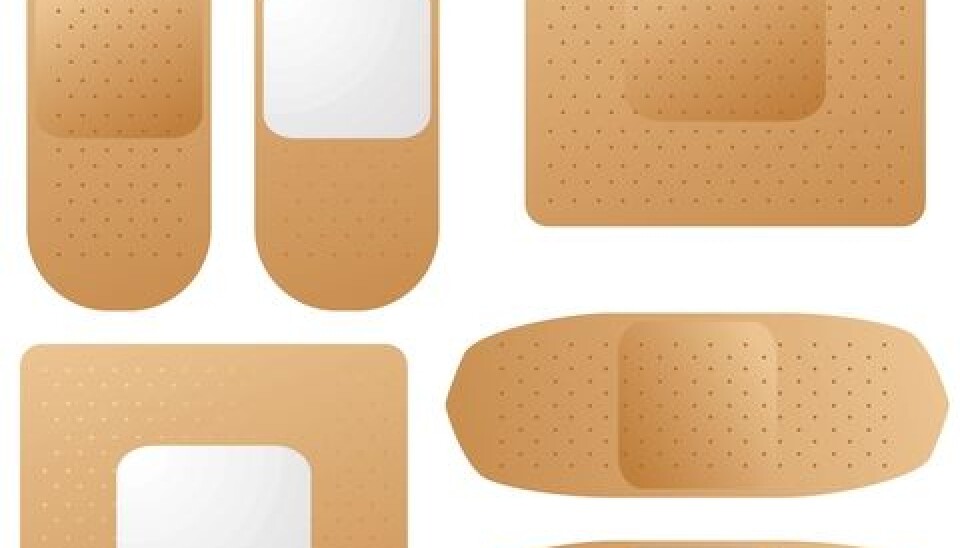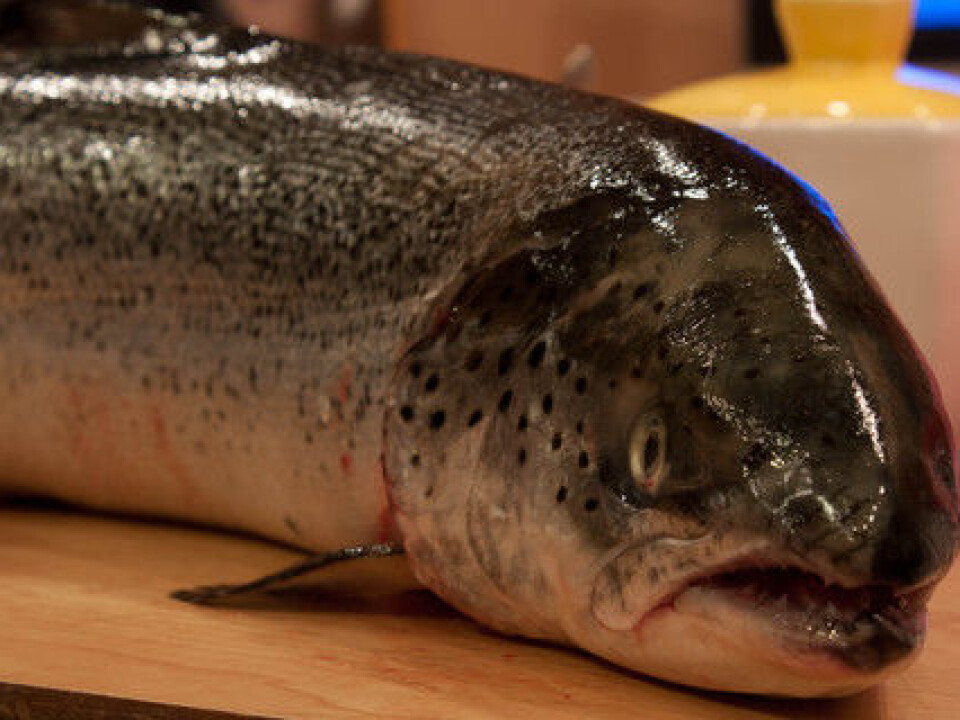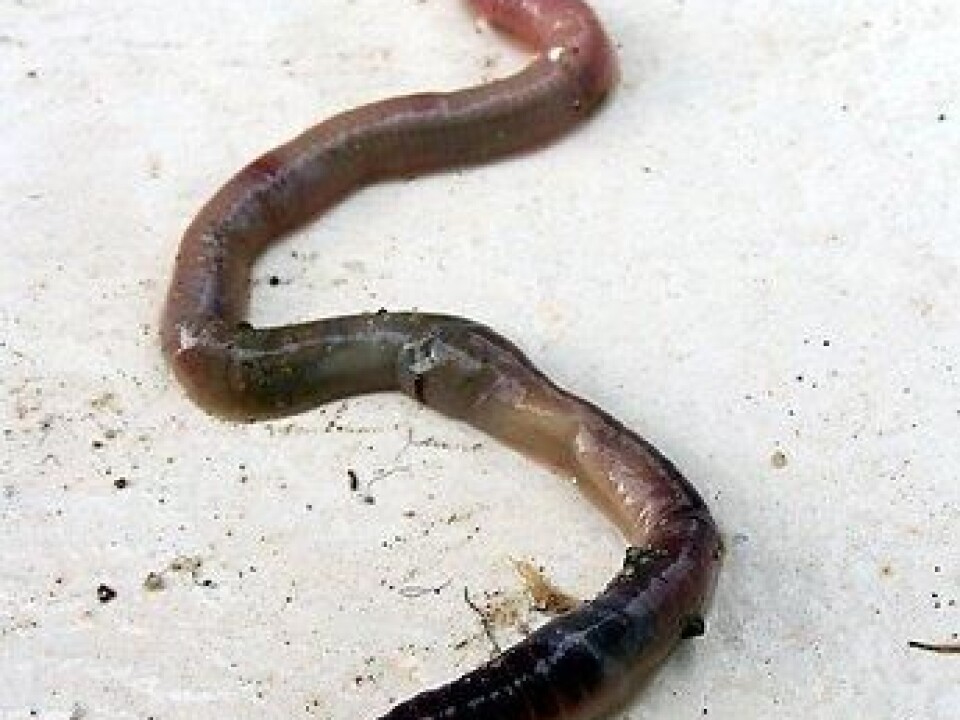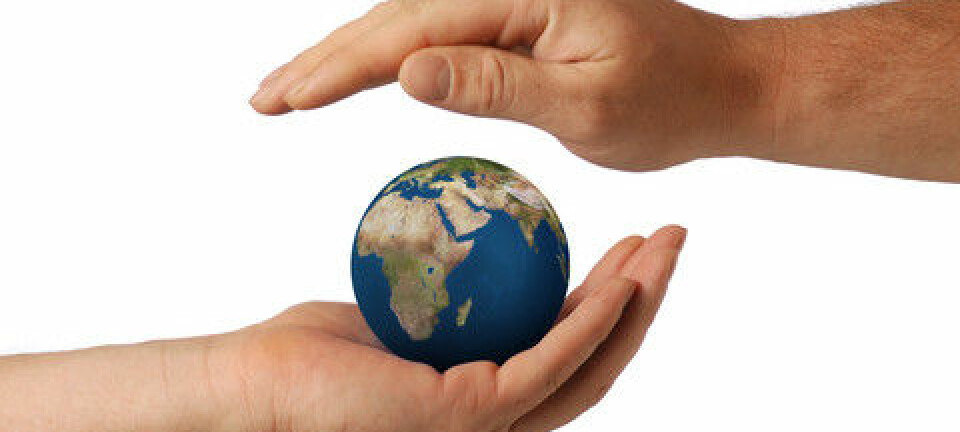This article was produced and financed by The Research Council of Norway

Finding the nano-needle in the haystack
Norwegian researchers are among the first in the world to use radioactivity to trace nanoparticles in animals and soil. This makes it easier to identify any negative environmental impact.
Denne artikkelen er over ti år gammel og kan inneholde utdatert informasjon.
Nanotechnology can be used to improve the properties of commercial products, to kill bacteria, fight odours and more. But what happens when these products are discarded and these incomprehensibly small particles are released into the environment?
Can these same qualities that kill bacteria in athletic garments, washing machines and refrigerators have an unintended detrimental impact on health and the environment as well?
Millionths of a millimeter
Nanoparticle use is posing new questions to researchers studying environmentally hazardous substances. The size of nanoparticles is actually measured in millionths of a millimetre. They are far too small for the examination methods used with common chemicals.
The first challenge is to find a way to track where these particles end up. Unless they can be located it will not be possible to determine much about their impact. So what needs to be done to track them down?

“Simply put, it’s easier to find a needle in a haystack when that needle is radioactive,” says Dr Deborah H. Oughton.
She is a professor at the Norwegian University of Life Sciences (UMB), specialising in nuclear chemistry. As part of a joint research project involving UMB, the Norwegian Institute for Water Research (NIVA), Bioforsk and international research partners, she has headed the effort to develop methods for tracing nanoparticles by rendering them radioactive. The project is part of the Research Council of Norway’s programme on Norwegian Environmental Research towards 2015 (MILJO2015).
Difficult to discover
“Nanoparticles are so miniscule that they are hard to find using methods common for other environmentally hazardous substances. Researchers looking for potential effects of nanoparticle contamination often resort to the use of unrealistically high concentrations of particles in their experiments,” Oughton states.
But there are several drawbacks to such an approach. First of all, the properties of particles change when concentrations become so dense. Secondly, such methods reveal very little about the spread patterns of the nanoparticles, break down over time or the capacity of nanoparticles to accumulate in concentrations presumed to normally occur in nature.

“This is why we wanted to test if it was possible to track nanoparticles using radioactivity,” Oughton explains.
Radioactivity as a marker
Oughton has her background in nuclear chemistry and took the idea that radioactivity could be used as a marker from this and several other fields. Related methods are already in use for studies of radioactive environmental contamination as well as in medical diagnostics.
“We looked at methods used in other fields and worked our way towards something which would work for nanoparticles. The idea is that when particles are radioactive, they can be traced. Our trials demonstrate that we can obtain a large amount of new and valuable information using this method even with a very low concentration of particles,” says Oughton.
Highly dangerous to fish
Together with colleague Dr Erik Joner of Bioforsk, she came up with a method in which earthworms were fed horse dung containing radioactive nanoparticles of silver, cobalt and uranium. Subsequently, they were able to study the uptake and accumulation of the nanoparticles by observing how the radioactivity was distributed and then comparing their observations with physiological findings. In other experiments from the same project, fish were exposed to various concentrations of nanoparticles.

“One of our discoveries showed that nanoparticles can accumulate in different parts of an organism. In salmon, we witnessed that certain nanoparticles affected gill function and had a severely toxic effect. The presence of surprisingly low concentrations of certain types of nanosilvers led to gill failure and resulting death of the fish.”
The study used lake water in order to optimise the relevance of the findings. The water in many lakes in Norway is relatively low in calcium. We found that this increases the amount of time nanoparticles stay in the water, says Oughton.
The finding that nanoparticles may have detrimental effects on fish gives cause for concern as the presence of nanosilver has previously been detected in waste water from sewage purification plants. Nanosilver is also widely used in clothing, and studies show that washing clothes releases nanosilver into the water drainage. Nanosilver is even used in washing machines themselves in many countries, although this is not allowed in Norway.
Nanoparticles can release ions over long periods
The researchers also found out new information about the long-term behaviour of nanoparticles in soil.
"Nanoparticles break down over time through the slow release of ions. For some nanoparticles, these ions are the agents responsible for toxic effects on organisms. This gradual leakage of ions means that free nanoparticles continue to pollute the environment over a long period of time,” Oughton states.
Some more toxic than others
The researchers also discovered differences among nanoparticles. Nanosilver was the most toxic of the group.
“Some types of nanosilver had a greater toxic effect than others. It is important for governments and industry to learn more about the risks involved with the various types of nanoparticles. Our research findings, along with other research on the environmental impact of nanoparticles, mean that we will soon know enough to know how to regulate use in order to prevent damage to the environment,” says Oughton.
Growing market, budding research activity
The use of nanoparticles has increased greatly in recent years. Areas of application include cosmetics, clothing, toys and food. The use of nanosilver as an anti-bacterial coating in refrigerators, sports clothing and bandages is among the most common uses.
A great deal of research on the effects of nanosilver and other nanoparticles on health and the environment is being conducted both in Norway and other countries.
“The results from our research project have been published internationally and have attracted interest from many countries. We are currently collaborating with researchers in France, among others, to develop measurement methods based on radioactive markers. At the same time, research institutions in Norway and the EU have also indicated their interest. The work is being continued under several projects funded by the Research Council of Norway and European research institutions,” Oughton points out.
Integrated research efforts
Nanotechnology and new materials have been a priority area in the Research Council since it established the research programme, Nanotechnology and New Materials (NANOMAT) under the Large-scale Programme Initiative in 2002. Research activities will be continued under the new large-scale programme, Nanotechnology and Advanced Materials (NANO2021).
“Nanotechnology can open some very exciting doors that could be instrumental in solving major global challenges. This is why we are establishing a new programme to generate knowledge and value creation within the areas of energy, the environment, health and sustainable use of natural resources,” says Director General Arvid Hallén of the Research Council of Norway.
“At the same time, we will take steps to ensure that technological developments are carried out responsibly, in a manner that benefits both individuals and society as a whole. Risks related to the growing use of nanotechnology and advanced materials will be a key focus for research under the new programme,” he adds.
Other Research Council programmes also address the same issues but from a different perspective.
“The purpose of the environmental research programme, MILJO2015, is to look at unintended impacts affecting the natural environment, for example nanoparticles and other materials added to products we use,” explains Hallén.
“This makes it possible to view the research in an overall perspective, ensuring the best possible foundation for future innovation and regulation,” he concludes.
Translated by: Glenn Wells/Carol B. Eckman

































